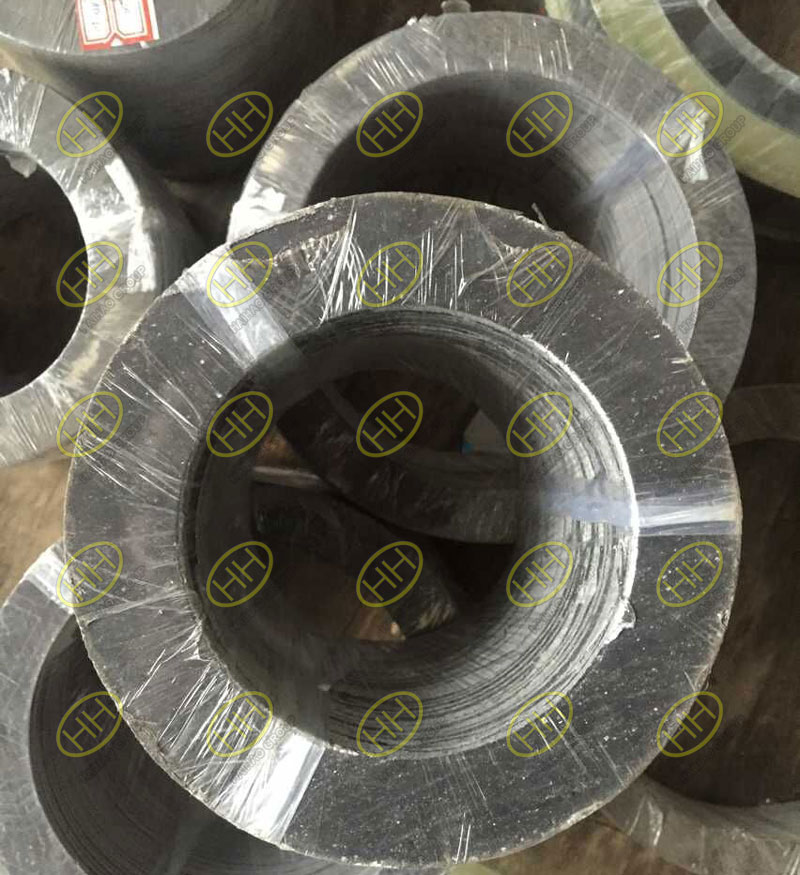What is a flange gasket? Types of gaskets used in pipeline
What is a flange gasket?
Flange gaskets are used to create a static seal between two flanges faces,at various operating conditions,with varied pressure and temperature ratings.A gaskets fills the microscopic spaces and irregularities of the flange faces,and then it forms a seal that is designed to keep liquids and gases.Correct installation of damage-free gaskets and damage-free flange faces is a requirement for a leak-free flange connection.

Graphite flange gaskets used in pipeline
Types of gaskets used in pipeline
Materials for gaskets can be divided into three main categories:
- Non-Metallic Types:
Non-Metallic gaskets are usually composite sheet materials are used with flat-face and raised-face flanges in low Pressure Class applications.Non-metallic gaskets are manufactured from arimid fiber,glass fiber,elastomer,Teflon® (PTFE),graphite etc..Full-face gasket types are suitable for use with flat-face flanges.Flat-ring gasket types are suitable for use with raised face flanges.
- Semi-Metallic Types:
Semi-Metallic gaskets or composite gaskets are composites of metal and non-metallic materials.Spiral wound,Metal Jacketed,and Kamprofile gasket are well known in composite gasket category.The metal is intended to offer strength and resiliency,while the non-metallic portion provides conformability and sealability.Often used semi-metallic gaskets are spiral wound and camprofile, and a variety of metal-reinforced graphite gaskets.
Semi-metallic are designed for almost all operating conditions and high-temperature and pressure applications,and are used on raised face,male-and-female,and tongue-and-groove flanges.
- Metallic Types:
Metallic gaskets are fabricated from one or a combination of metals to the desired shape and size. Often used metallic gaskets are ring-type-joint gaskets (RTJ). They are always applied to special, accompanying flanges which ensure good, reliable sealing with the correct choice of profiles and material.
Ring Type Joint gaskets are designed to seal by “initial line contact” or wedging action between the mating flange and the gasket. By applying pressure on the seal interface through bolt force, the “softer” metal of the gasket flows into the microfine structure of the harder flange material, and creating a very tight and efficient seal.
Flange gaskets shall be selected based on multiple process factors,such as operating temperature/pressure,type of fluid conveyed by the pipeline,flange type,size,pressure rating,material grade,and specifications.

